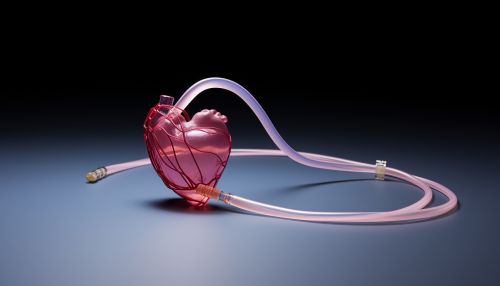Cardiovascular catheters
Introduction
Cardiovascular catheters are a key instrument in the field of cardiology, used for various diagnostic and therapeutic procedures. They are thin, flexible tubes that are inserted into the body to reach the heart or blood vessels. These catheters allow physicians to perform procedures without the need for invasive surgery, making them a vital tool in modern medicine.


Types of Cardiovascular Catheters
There are several types of cardiovascular catheters, each designed for specific procedures and applications. These include:
- Angioplasty catheters: These are used in procedures to open blocked or narrowed blood vessels. They are often equipped with a small balloon at the tip, which can be inflated to widen the vessel.
- Pacing catheters: These are used to regulate the heart's rhythm by delivering electrical impulses to the heart muscle.
- Swan-Ganz catheters: These are used to measure pressures in the heart and lungs, providing valuable information about a patient's cardiovascular health.
- Intravascular ultrasound catheters: These catheters use ultrasound technology to provide images of the inside of blood vessels, aiding in the diagnosis and treatment of vascular diseases.
Uses of Cardiovascular Catheters
Cardiovascular catheters are used in a variety of procedures, including:
- Coronary angiography: This is a diagnostic procedure that uses a special dye and X-rays to see how blood flows through the heart.
- Percutaneous coronary intervention (PCI): This is a non-surgical procedure used to treat the narrowed coronary arteries of the heart.
- Electrophysiology study (EPS): This is a test that records the electrical activity and the electrical pathways of the heart.
- Cardiac ablation: This is a procedure that can correct heart rhythm problems.
Risks and Complications
While cardiovascular catheters have revolutionized the field of cardiology, they are not without risks. Potential complications can include infection, bleeding, blood clots, and damage to the blood vessels. In rare cases, serious complications such as heart attack or stroke can occur. However, these risks are generally outweighed by the benefits of the procedures these catheters enable.
Future Developments
The field of cardiovascular catheterization continues to evolve, with ongoing research and development aimed at improving the safety, efficiency, and effectiveness of these devices. This includes the development of new materials and designs, as well as advancements in imaging technology and procedural techniques.
